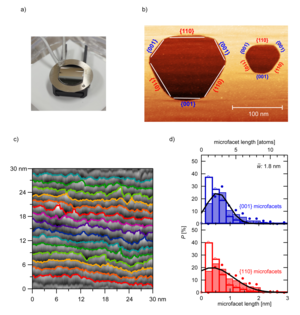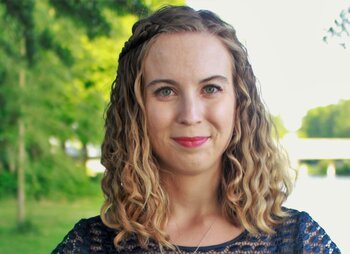Researchers of the Future: Dr. Sabine Auras
Scienta Omicron are delighted to share the thesis of Dr. Sabine Auras, titled “Exploring structure dependencies in gas-surface interactions with curved single crystals”. This research was completed in part on Scienta Omicron VT STM.
We congratulate Dr. Sabine Auras on her recent PhD defense and look forward to reading her future results and publications.

About Dr Sabine Auras
Dr. Sabine Auras of Leiden University began her undergraduate studies at Ludwig Maximilian University in München with a focus on Chemistry and Biochemistry. However, during her bachelor the exactness of physical chemistry, inorganic chemistry and catalysis captured her attention and so began her career down this pathway instead.
After completing an industrial internship at Clariant as part of her masters, Sabine joined a project with the Ludo Juurlink group at Leiden University. This group explores gas-surface dynamics and Sabine enjoyed working with friendly colleagues and a well-equipped lab for fundamental catalysis studies. At this time surface structures and partial reactions caught her interest and informed the direction of her PhD studies.
During Sabine’s PhD she had the opportunity to work in San Sebastian and Chicago and learnt more about using curved crystals for the study of step edges in catalysis and to study the molecules at low temperature with an LT STM.
Next up for Sabine is to join a research group in San Sebastian. Here she will extend her catalysis studies on curved crystals with STMs both at RT and low temperature, and also with higher pressure XPS and with the use of synchrotron radiation. She will also explore the pressure gap in UHV catalysis studies, and how it can be addressed to translate the science to industrial processes.
Sabine envisions the most important scientific challenge in catalysis for the next decade to be methods for capturing CO2 efficiently on a large scale with affordable catalysts in order to incorporate CO2 in the carbon cycle. This scientific challenge is extremely large because CO2 is thermodynamically the most stable form of carbon and oxygen. However, discovering catalysis steps to move the molecules uphill in energy could lead to impactful and significant results for minimising global warming.
Further reading
Auras, S.V., van Bree, R.A.B., Bashlakov, D.L., van Lent, R., & Juurlink, L.B.F. It's not just the defects – a curved crystal study of H2O desorption from Ag. Phys. Chem. Chem. Phys., 2019,21, 15422-15430. https://doi.org/10.1039/C9CP02609F
Roorda, T., Auras, S.V. & Juurlink, L.B.F. Chiral Surface Characterisation and Reactivity Toward H–D Exchange of a Curved Platinum Crystal. Top Catal 63, 1558–1568 (2020). https://doi.org/10.1007/s11244-020-01371-3
Tycho Roorda, Sabine V. Auras, Ludo B. F. Juurlink, Chiral Surface Characterisation and Reactivity Toward H–D Exchange of a Curved Platinum Crystal, Topics in Catalysis, 10.1007/s11244-020-01371-3, (2020). https://doi.org/10.1002/anie.202005616
Article by: Jacqueline Doyle and Ad Ettema, Scienta Omicron

